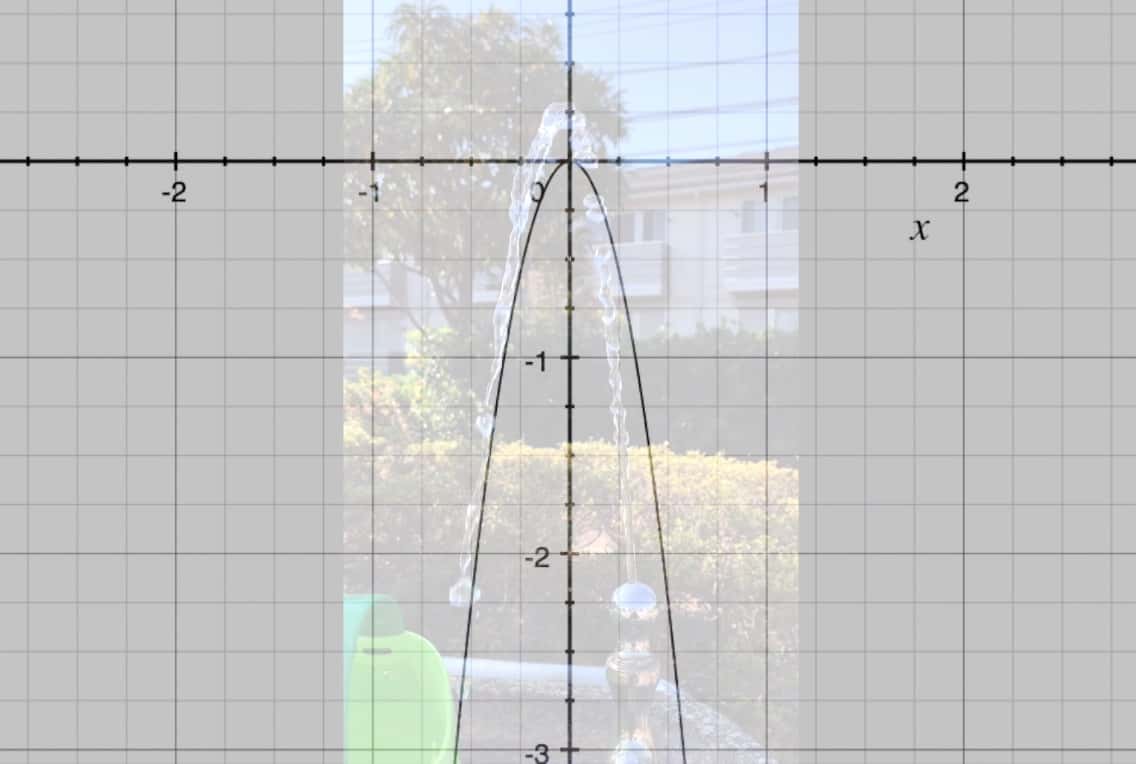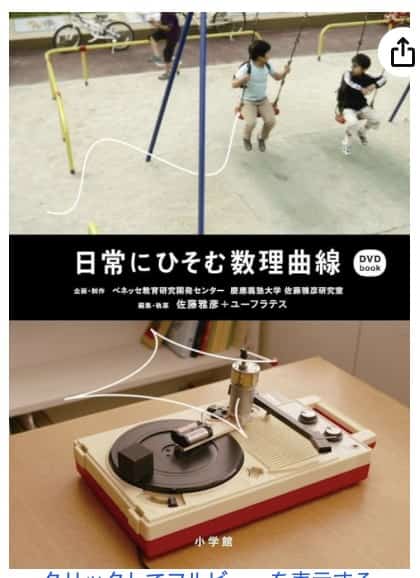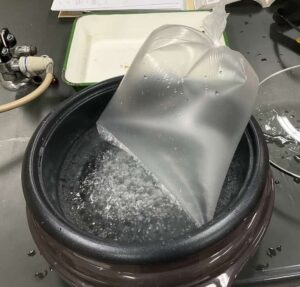Physics in the Park: Finding the Hidden Math in a Water Fountain
This is Ken Kuwako, the Science Trainer. Every day is an experiment!
A walk in the park might seem ordinary. But if you stop and look at it through the eyes of a scientist, it transforms into a laboratory full of wonder and discovery. Take, for example, the water flowing from a drinking fountain. Would you be surprised to learn that the beautiful arc it creates perfectly hides a bit of math you probably learned in middle school?
Today, let’s uncover the secret behind this “mathematical art” found in the park.
The Secret Behind the “Mathematical Art” in the Park
First, take a look at this video. It’s nothing more than a simple water fountain being turned on.
As the water shoots out, it falls in a perfect arc. When I analyzed the trajectory of this water, I found that it aligns incredibly well with the graph of a negative quadratic function—in other words, a clean parabola.

It’s almost as if someone traced a graph from a math textbook with an invisible pen!
Why Does Water Form a Parabola? A Peek into the Laws of Physics
This beautiful curve isn’t a coincidence. It’s drawn by the rules that govern everything in the universe: the laws of physics. Here’s how it works:
Upward Force: Water pushed from the tap has an initial upward momentum (initial velocity).
Constant Gravity: However, as long as it’s on Earth, the water is constantly being pulled straight down by gravity. This force gradually slows the water’s upward momentum until it eventually begins to fall.
The combination of this forward momentum and the downward pull of gravity creates the same beautiful parabolic trajectory you see when you throw a ball. ⚾
Not Quite Perfect? Nature’s Special Ingredient: Surface Tension
However, nature doesn’t always follow the textbook perfectly. If you watch the video closely, you’ll notice moments where the parabola’s shape breaks down slightly, depending on the water’s pressure. The culprit? Surface tension.
This is the force that causes water molecules to “hold hands” and pull together into the smallest possible shape. This force can cause droplets to merge and grow larger, which changes the air resistance and causes the trajectory to deviate slightly from a perfect curve.
Isn’t it fascinating to see both a perfect mathematical model and nature’s own little “imperfections” at play in such a simple phenomenon?
Next time you’re near a park, try to find your own piece of “mathematical art.” By the way, if you enjoy discovering interesting curves hidden in everyday life, this DVD is a lot of fun!

Contact & Inquiries
Bringing the wonder of science closer to you! I create easy-to-understand guides for fun science experiments you can do at home. Feel free to explore!
- The content from my “Science Idea Book” is now a published book! Learn more here.
- About the author, Ken Kuwako, click here.
- For inquiries (writing, lectures, workshops, TV consulting, etc.), click here.
・Follow me on X for the latest updates!
![]() Check out my experiment videos on the Science Idea Channel!
Check out my experiment videos on the Science Idea Channel!


